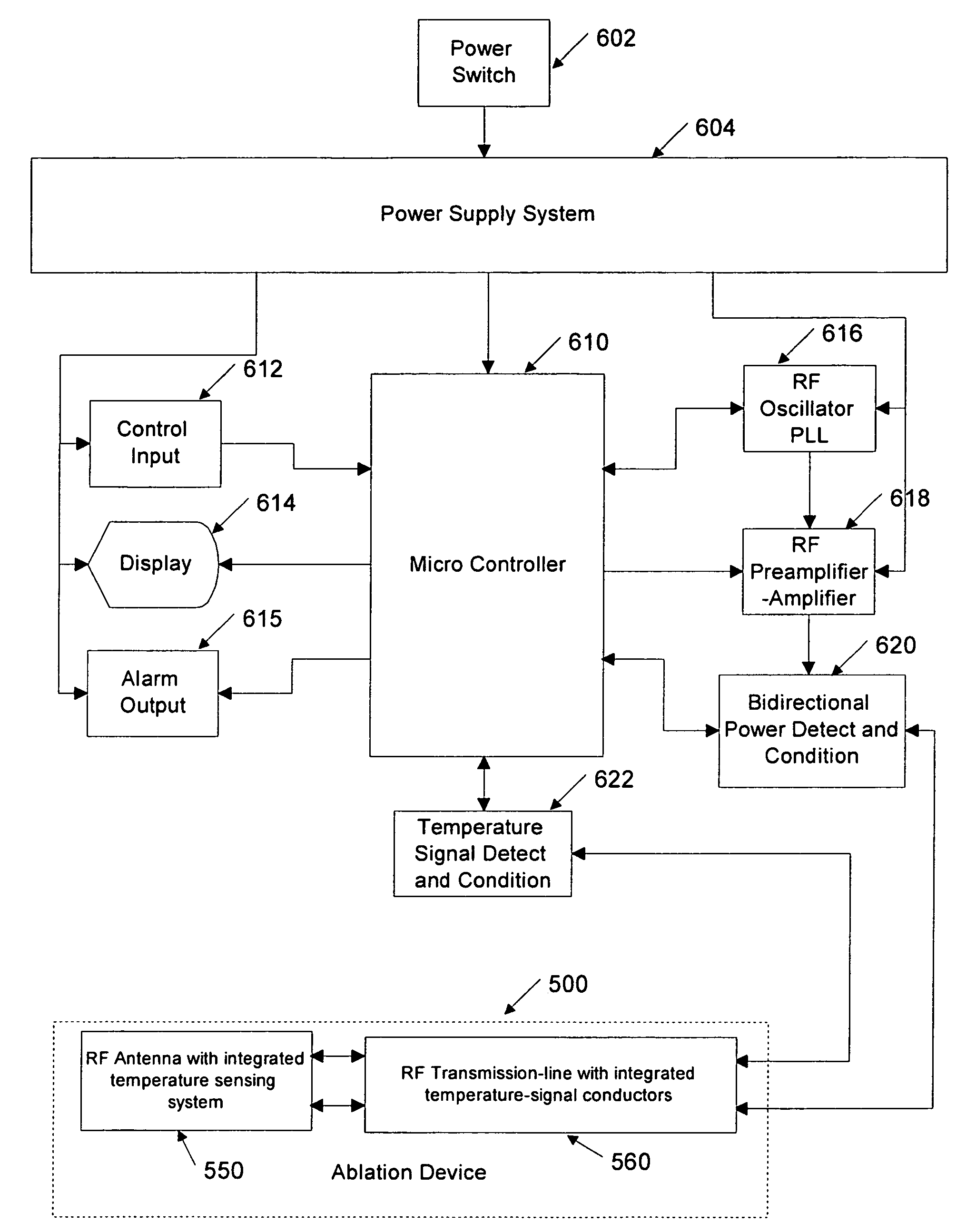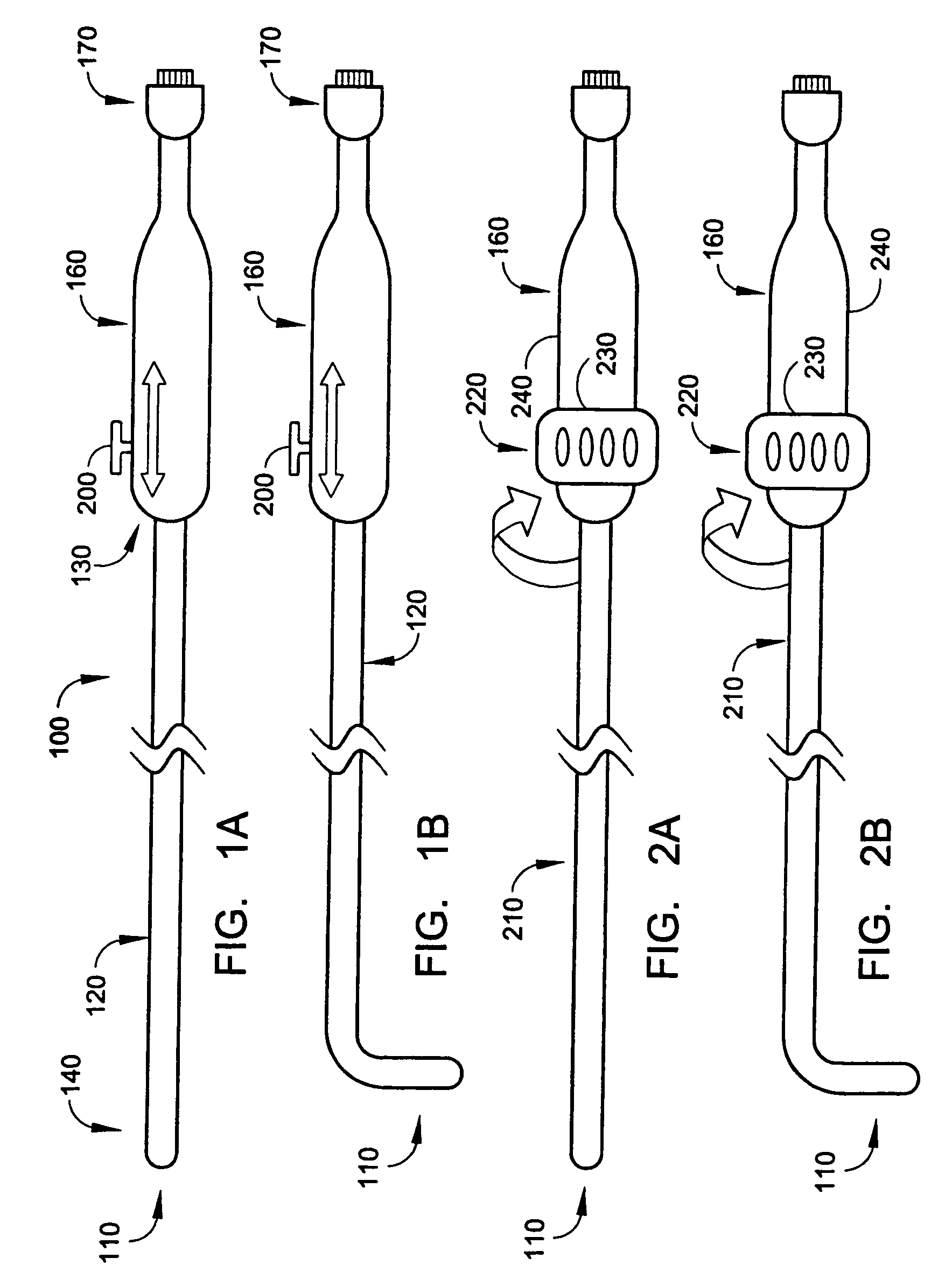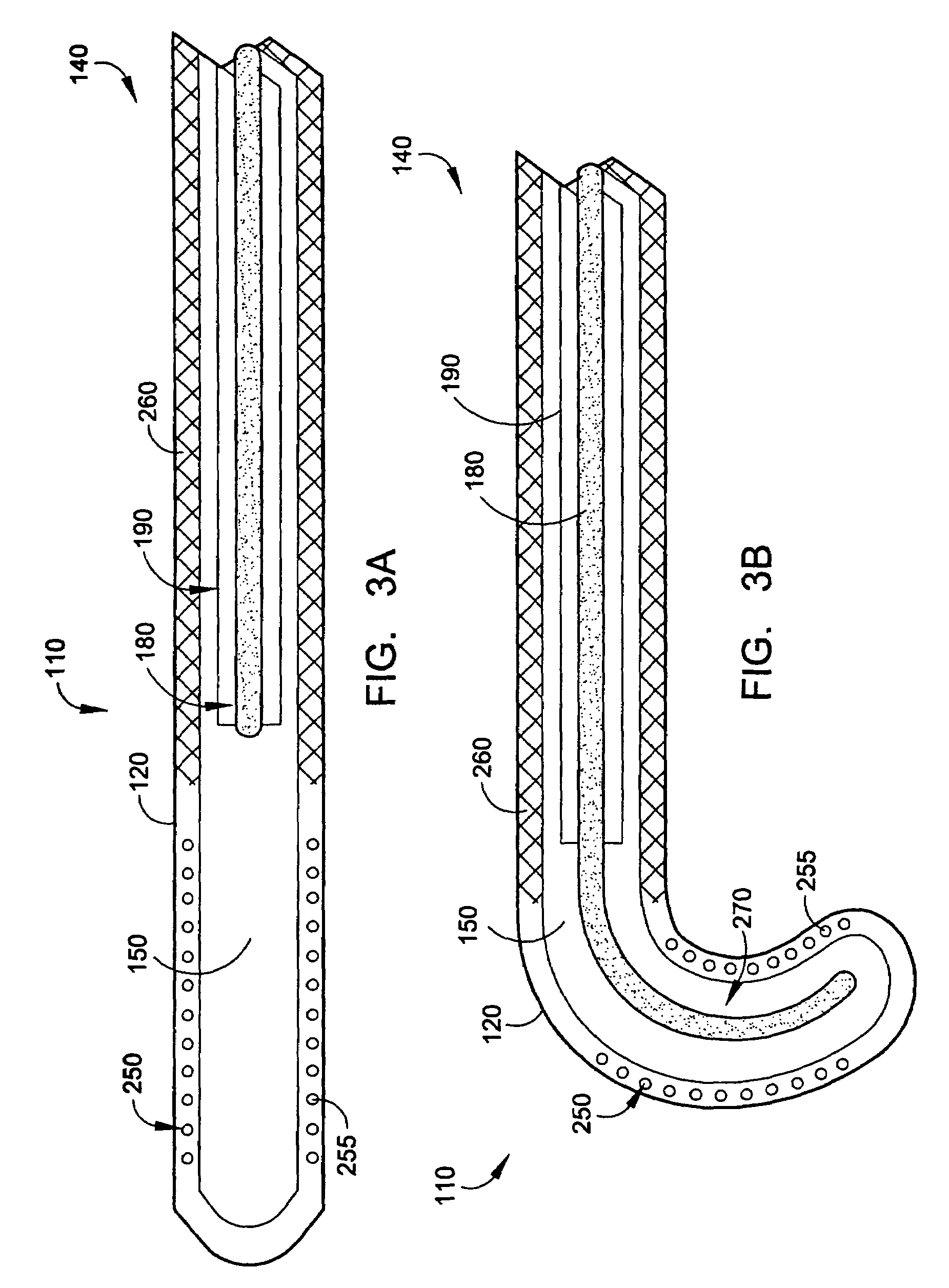Radio-frequency based catheter system and method for ablating biological tissues
a biological tissue technology, applied in the field of radio frequency based catheter systems for ablating biological tissues and occlusions, can solve the problems of a large health care burden, stroke and heart attack, and the inability to widely adopt maze procedures, so as to achieve efficient tissue ablation and minimize the effect of reflected power ratio
- Summary
- Abstract
- Description
- Claims
- Application Information
AI Technical Summary
Benefits of technology
Problems solved by technology
Method used
Image
Examples
Embodiment Construction
[0032]Certain embodiments as disclosed herein provide for a radio frequency (RF) based catheter system and method for ablation of biological tissue, and more particularly a system and method which controls RF energy to targeted biological tissue. For example, one method and system as disclosed herein allows for control of RF energy delivery by controlling reflected to forward power ratio, and another method and system as disclosed herein incorporates a temperature sensor for monitoring and controlling reflected temperature in addition to reflected / forward power ratio.
[0033]After reading this description it will become apparent to one skilled in the art how to implement the invention in various alternative embodiments and alternative applications. However, although various embodiments of the present invention will be described herein, it is understood that these embodiments are presented by way of example only, and not limitation. As such, this detailed description of various alterna...
PUM
 Login to View More
Login to View More Abstract
Description
Claims
Application Information
 Login to View More
Login to View More - R&D
- Intellectual Property
- Life Sciences
- Materials
- Tech Scout
- Unparalleled Data Quality
- Higher Quality Content
- 60% Fewer Hallucinations
Browse by: Latest US Patents, China's latest patents, Technical Efficacy Thesaurus, Application Domain, Technology Topic, Popular Technical Reports.
© 2025 PatSnap. All rights reserved.Legal|Privacy policy|Modern Slavery Act Transparency Statement|Sitemap|About US| Contact US: help@patsnap.com



